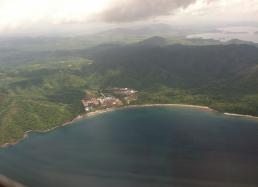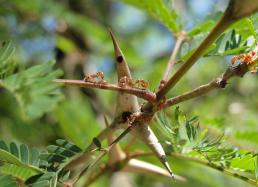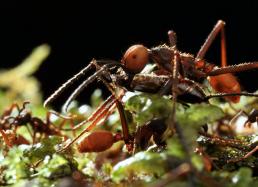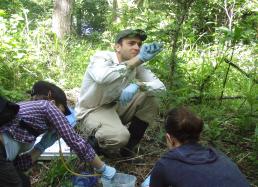Discovering What Drives Ant Diversity in Costa Rica
Santa Rosa National Park, one of Costa Rica's oldest and largest national parks, lies within the Area de Conservación Guanacaste (ACG). A UNESCO World Heritage Site, the ACG protects an enormous variety of habitats, including rainforests, beaches, mountains, and Central America's largest remaining section of tropical dry forest, all of which are home to many endangered plants and animals—including ants with surprising strategies for survival.
Some species, such as certain kinds of acacia ants, are primarily "vegetarians" that establish mutually beneficial relationships with specific types of trees. The trees provide food and shelter for ant colonies, and in return the ants protect the tree from parasites and foraging animals by stinging the intruders. Other species, such as army ants, are primarily predators that form giant raiding parties to hunt for insect prey.
Strategies for Survival
As we know, for a species to endure and evolve, it must adapt as its environment changes over time and find ways to harness new food resources. Looking closely at the fascinating feeding strategies of ants in the ACG, scientists have discovered that one key to their diversity lies in the unique ways they harvest and digest food.
For example, many of the herbivore ants harbor bacteria in their gut that help provide the proteins missing in their plant-based diet. And some of the insect-eating ants have developed an entirely unique caste of "superworkers" that can capture, cut up, and carry back much larger prey than other competing ant species—quite an evolutionary advantage.
Diet or Daddy?
The question for science is whether these crucial ant characteristics are acquired or inherited. In other words, are protein-producing bacteria being ingested from the environment, or are they being passed down through the generations? And is the birth of a "superworker" the result of a special food supply—or a special father?
While these questions about ant adaptations may seem trivial at first glance, their answers provide insight into the mechanisms of evolution that affect all life on Earth. Even today, scientists are learning that, like ants, we humans rely on certain gut bacteria to extract nutrients, and we also experience certain diseases and disabilities triggered by changes in our diet and environment.
The 2012 Expedition
To investigate the role of nature and nurture on the evolution of ant diversity, Field Museum curator Dr. Corrie Moreau led an expedition to Santa Rosa National Park and the ACG in June of 2012. She and her team surveyed several species collected in the field and also raised some of these collected ants on sterile diets so they and their gut bacteria can be compared back home in the Moreau Ant Lab.
As part of their mission, the expedition also focused on providing field and lab experiences for undergraduate and graduate students hoping to pursue careers in science. Their ongoing research on the ants of Costa Rica continues to reveal surprising results that impact our understanding of diversity and evolution. To learn more, please explore the stories in "About the Expedition," and check out the photo galleries, videos, and blogs posted by both Corrie and her scientists-in-training!





